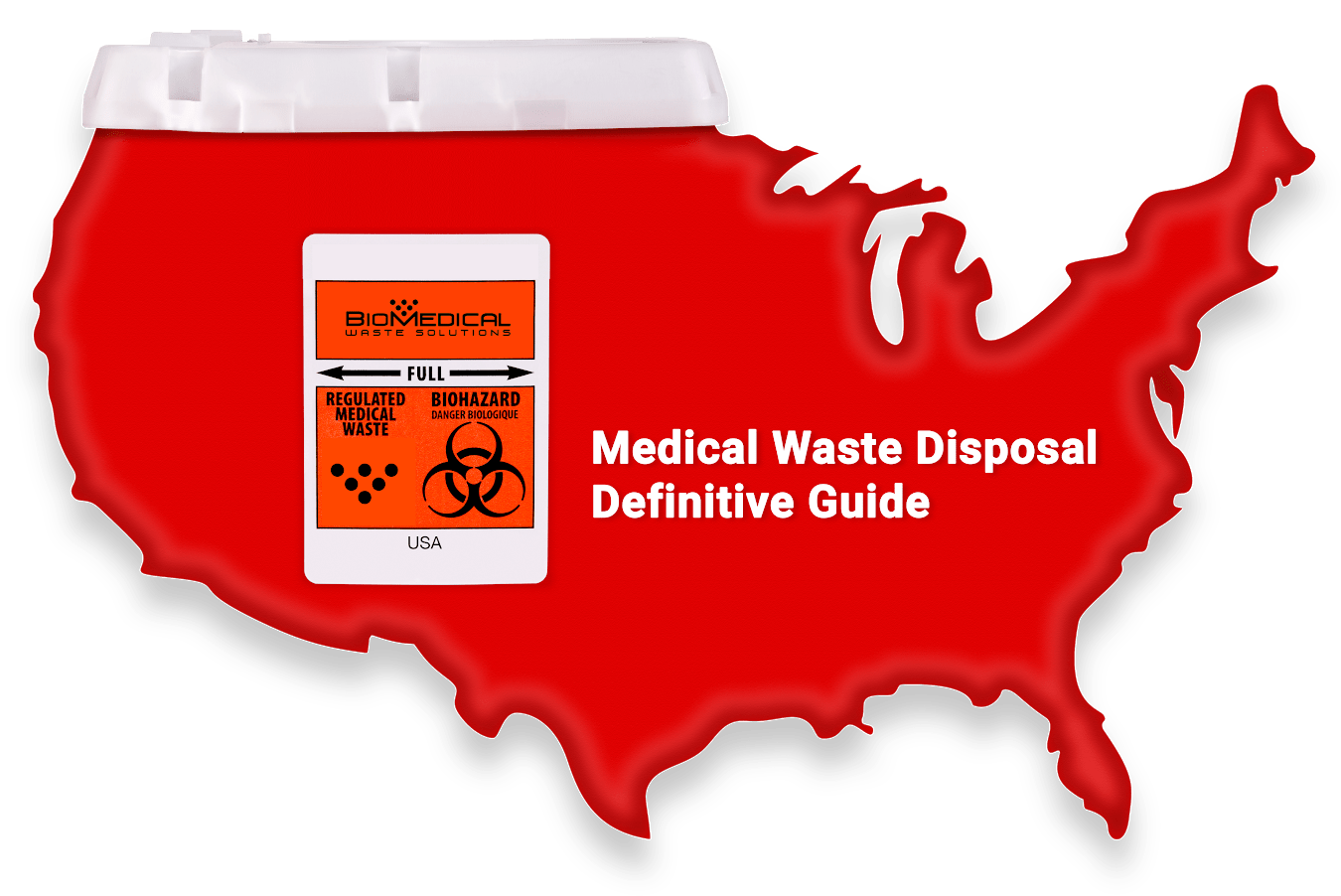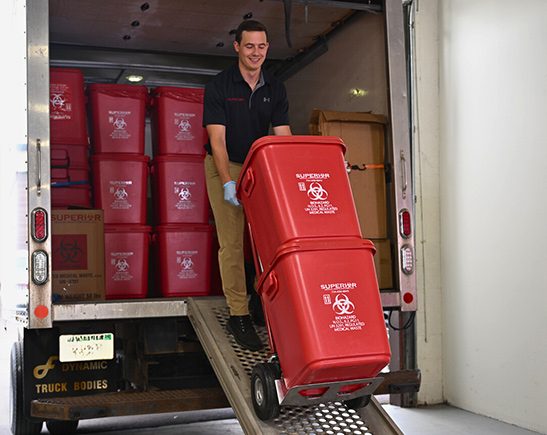Environmental Obligation: The Eco-Friendly Approach to Medical Waste Disposal
Environmental Obligation: The Eco-Friendly Approach to Medical Waste Disposal
Blog Article
Exploring Different Garbage Disposal Options for a Cleanser Atmosphere
In the pursuit of a cleaner environment, the management of garbage disposal has actually emerged as a crucial centerpiece for sustainable advancement. With a plethora of waste disposal alternatives offered, ranging from conventional land fill methods to ingenious waste-to-energy technologies, the option of just how we manage our waste has significant implications for our world's health. By taking a look at the numerous approaches and methods employed in reusing, composting, incineration, garbage dump monitoring, and waste-to-energy procedures, a deeper understanding of their effects and performance can be gotten. The quest for optimal garbage disposal methods that prioritize ecological conservation while fulfilling the demands of an expanding populace stays a pressing issue in today's globe.
Recycling Methods
Implementing reliable recycling approaches is vital in reducing waste and promoting sustainability in our setting. Recycling entails the procedure of converting waste materials right into recyclable items to stop unneeded disposal.
One more essential recycling technique is composting, which includes breaking down natural waste like food scraps and yard trimmings right into nutrient-rich dirt. This procedure not only diverts natural waste from garbage dumps yet also creates a useful resource for gardening and agriculture. Furthermore, upcycling is a creative recycling technique that includes transforming old or thrown out materials into items of greater quality or value. By incorporating these different recycling techniques right into our waste administration techniques, we can considerably lower our environmental impact and relocate towards an extra sustainable future.

Composting Techniques
Efficient waste administration methods, such as recycling techniques, pave the method for a cleaner atmosphere, and currently, changing the focus to 'Composting Techniques', we explore lasting ways to disintegrate natural waste for environmental benefit. medical waste removal service.
Composting is an all-natural process that transforms organic waste, like food scraps and lawn trimmings, right into a nutrient-rich soil amendment. The trick to successful composting hinges on developing the appropriate balance of green products, such as vegetables and fruit scraps, and brown materials, like dried fallen leaves and twigs. These products decompose with the assistance of bacteria, damaging down the waste into beneficial garden compost.
There are various composting techniques available to fit different needs. Traditional backyard composting involves layering organic materials in a container or heap and routinely transforming the blend to aerate it. Vermicomposting, on the other hand, utilizes worms to damage down raw material into compost (click here). For those with limited space, interior composting systems supply a convenient remedy. By utilizing composting strategies, we can reduce the quantity of waste sent out to garbage dumps while creating a valuable product for improving soil and supporting plant development.
Incineration Advantages And Disadvantages
Incineration, as a garbage disposal method, offers both advantages and disadvantages that warrant mindful factor to consider in the realm of sustainable waste management practices. On the positive side, incineration can significantly lower the volume of waste, lessening the need for garbage dump area and potentially decreasing greenhouse gas emissions. Incineration additionally permits the healing of energy through the generation of power or heat, adding to source recuperation. The process can be made use of to damage hazardous compounds, using a safe approach for dealing with particular types of waste that may present dangers to public wellness and the setting if left without treatment.
However, there are remarkable disadvantages to incineration. One significant issue is the prospective launch of unsafe toxins into the air, such as dioxins, hefty steels, and particulate matter, which can have unfavorable effects on human health and wellness and the environment. In addition, the high initial investment and functional prices of incineration facilities pose financial difficulties, making it a less cost-effective alternative compared to other waste administration techniques. Cautious monitoring and guideline are necessary to reduce these adverse influences and make best use of the benefits of incineration as component of a comprehensive waste administration approach.
Land Fill Management Methods
Garbage dumps play a vital duty in waste administration and ecological preservation by providing a containment system for the disposal of strong waste materials. By condensing the waste, the volume is minimized, permitting for even more waste to be accommodated over time.
Moreover, the application of day-to-day cover techniques is crucial in reducing smells, stopping clutter, and minimizing the tourist attraction of parasites. Covering the disposed waste at the end of each day assists to have smells and stop potential environmental contamination. In addition, the surveillance of land fill gas discharges and leachate levels is critical in ensuring that ecological criteria are met which any type of prospective risks to surrounding environments are decreased.

Waste-to-Energy Technologies
Among the cutting-edge methods to waste monitoring includes using Waste-to-Energy modern technologies to convert solid waste into usable power resources. Waste-to-Energy (WtE) innovations incorporate a series of procedures that intend to draw out energy from waste products via thermal, chemical, or organic means. This conversion why not try this out process not just reduces the quantity of waste that ends up in garbage dumps yet also creates valuable energy sources such as electrical power, warm, or biofuels.
Incineration entails burning waste at high temperature levels to produce heat and electrical energy. Gasification converts waste right into a syngas, which can be used for power generation or chemical production.
Applying Waste-to-Energy modern technologies can assist reduce ecological problems linked with traditional waste disposal techniques while simultaneously providing a renewable resource resource. Mindful factor to consider has to be provided to discharges control and ensuring the sustainability of feedstock products for these modern technologies to be absolutely valuable for a cleaner setting.
.jpg)
Conclusion
In verdict, checking out numerous waste disposal alternatives such as reusing, composting, incineration, garbage dump monitoring, and waste-to-energy innovations is important for promoting a cleaner setting - click here. Each approach has its own benefits and difficulties, yet by making use of a mix of these techniques, we can work in the direction of lowering the quantity of waste that finishes up in landfills and eventually add to a much more sustainable future for generations to come
With a wide range of waste disposal options available, varying from traditional garbage dump approaches to cutting-edge waste-to-energy technologies, the option of just how we manage our waste has far-ranging effects for our world's health. medical waste removal near me.Incineration, as a waste disposal technique, presents both benefits and drawbacks that warrant careful factor to consider in the world of lasting waste monitoring methods.Garbage dumps play an important function in waste management and ecological preservation by providing a control system for the disposal of strong waste materials. By condensing the waste, the quantity is reduced, permitting for more waste to be accommodated over time
One of the innovative approaches to squander monitoring involves taking advantage of Waste-to-Energy modern technologies to transform solid waste into useful power sources.
Report this page